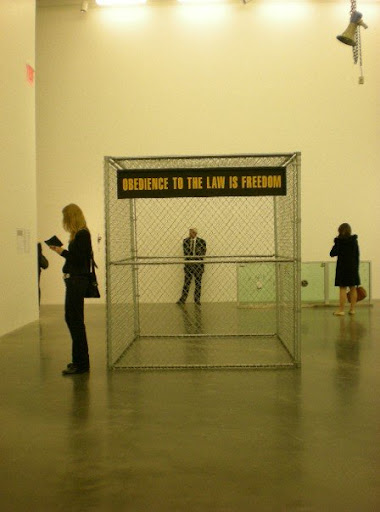
“Unmonumental: The Object in the 21st Century,” New Museum

"Dibenkorn in New Mexico," Grey Art Gallery, New York University

"Pricked: Extreme Embroidery," Museum of Art & Design

"Multiplex: Directions in Art, 1970 to Now," Museum of Modern Art

"West of the Moon," Little Cakes Gallery
In Philip Guston Talking, he wrote/spoke,
"I think that probably the most potent desire for a painter, an image-maker, is to see it. To see what the mind can think and imagine, to realize it for oneself, through oneself, as concretely as possible. I think that's the most powerful and ath the same the most archaic urge that has endured for about 25,000 years...
...I live out of town, and driving down to New York City I go down the West Side Highway. There are all these buildings that look as if they are marching. You know, by painting things they start to look strange and dopey. Also there was a desire, a powerful desire though an impossibility, to paint things as if one had never seen them before, as if one had come from another planet. How would you paint them' how would you realise them? It was really a tremendous period for me. I couldn't produce enough. I couldn't go to New York, to opening of friends of mine like Rothko, de Kooning, Newman. I would telephone Wester Union with all kinds of lies such as that my teeth were falling out, or that I was sick. It was such a relief not to have anything to do with modern art. It felt as if a big boulder had been taken off my shoulders."
The Diebenkorn show is an important show for me to see. There wont be many words to describe what you one must see in person. I thought was I just happy, were the paintings making me happy? And then I thought of his "Knife and Tomato" painting. Enough said.
Diebenkorn aptly found a way of painting while in graduate school in New Mexico. This retrospective is all his paintings and drawings created during this seminal period in his work. The space, expansive and stacked, found in the large canvases are peculiar, marking making drawn swiftly and ultimately considered, as the paintings show its many decisions and layers. and I wonder, could these paintings have existed if not in New Mexico? Of course not, but Diebenkorn's decision to leave New York, disassociating himself from the New York School and painting honestly, has me thinking. Clearly, Diebenkorn's palette lends us to declare that he remained correct, and the paintings prove to be so.